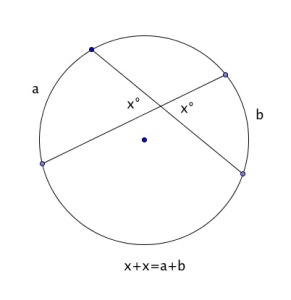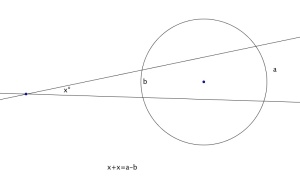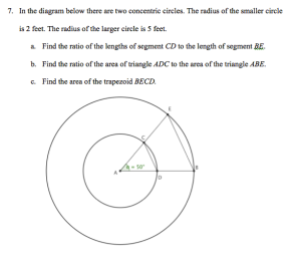While most of my colleagues enjoyed a well-deserved day off in honor of Martin Luther King, Jr. we were at work here in our boarding school. We take advantage of these days as visitation days and we keep on counting the days of the year.
Last week I wrote about my frustrations with trying to find a way to help keep my students more aware of the benefits of daily practice in Geometry. This weekend I engaged in a lengthy and mind opening twitter conversation with Elizabeth (@cheesemonkeySF) and my mind is still buzzing with ideas. I noticed something today that I may be able to take advantage of. Tomorrow we have our next Geometry test. This is the second year that my school is using the Geometry text that I wrote. This means that we are still working our way through the strengths/weaknesses of the text and we have a storehouse of documents to draw upon. I decided earlier in the year that I would hand out last year’s tests as practice a few days before this year’s test over similar material. So, last Friday I gave a copy of the test from last year that covers through Chapter Six of our text. Today in class I saw more evidence than usual of HW completion. So, when the HW feels particularly helpful then my students are more likely to complete it. Pretty logical, right? What I need to do then is to make sure that I can get buy-in like this more frequently. I have a batch of quizzes from last year that I can easily give out mid chapter as weekend HW that both serves as a sneak preview of the kind of quiz questions I was interested in asking last year AND serves as good, focused practice that feels to my students as if it has more payoff. This will not solve all of the problems I have been wrestling with and I need to sort out Elizabeth’s sage advice and figure out how to incorporate it in a way that fits me, but this feels like progress. I am happier about Geometry than I was last week and I am optimistic about tomorrow’s test. I hope that I will be able to report on student success.
Last week I also wrote about a problem posed to me by an alum when he was visiting. I may not have reported the problem accurately, so here is a second take. One hundred people are lined up to board an airplane with 100 seats. Each person has one seat assigned. The first person boards the plane and randomly chooses a seat. After that, each person who boards will sit in his/her assigned seat if it is available. If the correct seat is not available then that person will randomly choose a seat. What is the probability that the 100th person will be able to sit in the correctly assigned seat? I broke this problem down after one of our boarding community dinners last Thursday and a colleague and I simplified it to two people (50% chance, no surprise!) and then three people. With three people – call them A, B, and C – the seating arrangements are ABC, ACB, BAC, BCA, CAB, CBA. Two of these arrangements have C sitting in the third seat and for the purposes of this permutation, I am treating that as the ‘correct’ seat. However, the arrangements ACB and BCA are not possible under these rules. If person A does not sit in seat B, then person B is obliged to sit in his correct seat. So we have two of four possibilities for a 50% success. This seems pretty suspicious and I try to sort out the arrangements with four people. I won’t bore you with the detail but this is also 50%. When I mentioned this problem to a number of colleagues one of them mentioned that her son had talked about this problem from a math competition. Her son is in my AP Calculus BC course and he is an extraordinarily talented mathematician. He explained the problem this way in class today and I probably will not be as elegant as he was. Here is his take:
By the time that person two sits down on the plane we know that his seat has a person in it. Either it is person one and then person two chooses another seat or his seat was available and he sat in it. Similarly, by the time person three sits down we know that someone is in person three’s seat. Either person one or person two is accidentally in that seat or person three sits in her proper seat according to the rules of this problem. We can extend this argument all the way to person ninety-nine. Now, we know for a fact that all seats from person two’s seat through person ninety-nine’s seat are all occupied. The only mystery is whether the other occupied seat is the first person’s seat or the hundredth person’s seat. It is not a stretch to see that these two possibilities should be equally likely.
What I LOVE about this explanation is that it does not rely on combinatoric wizardry or thorny algebra manipulations. It also make crystal clear sense once it has been explained but it did not make crystal clear sense before that. It seemed completely unreasonable to me that, with so many people involved, the answer would be so clean. In fact, my student’s explanation made it clear that the number of people on board is a complete red herring. It might as well be one thousand people instead.
While I might have enjoyed the day off, I also enjoyed the day on.


